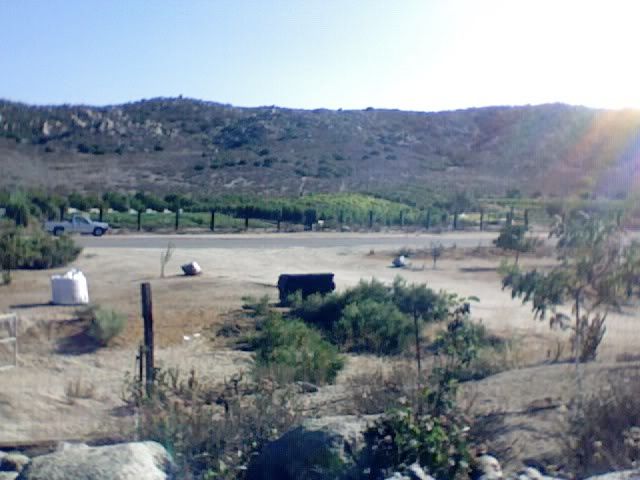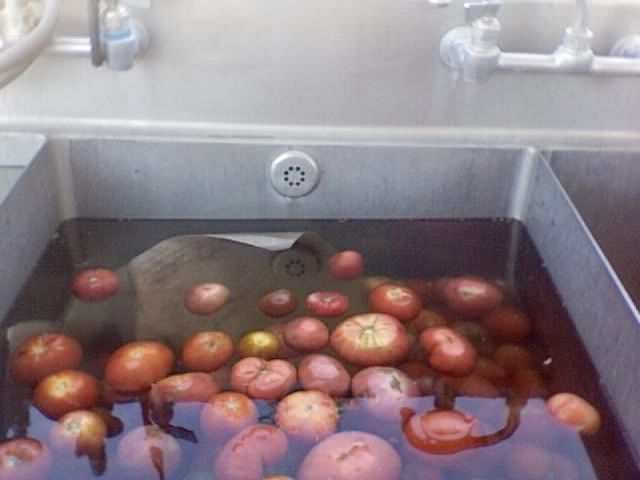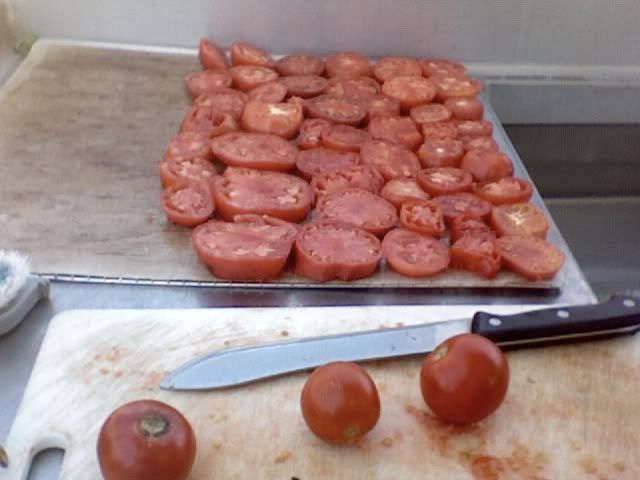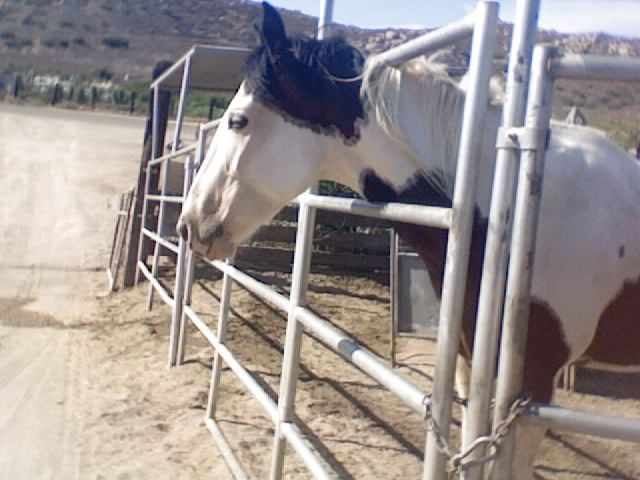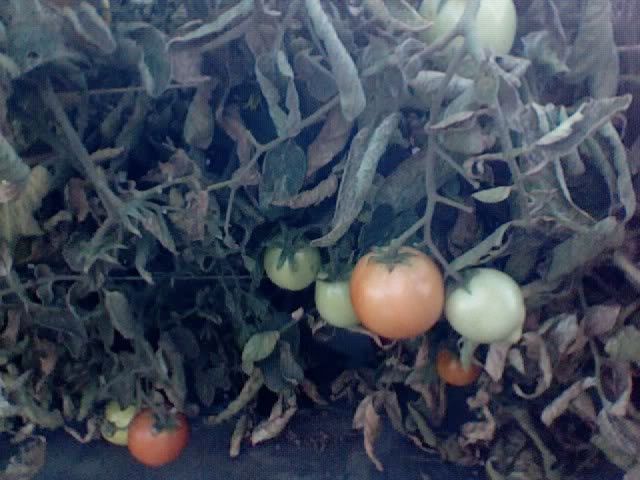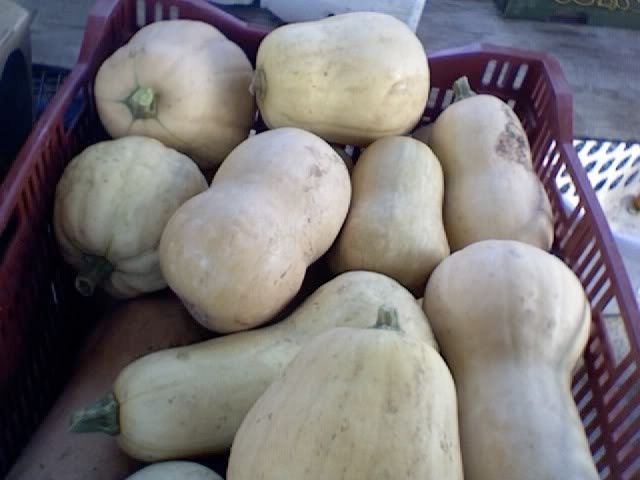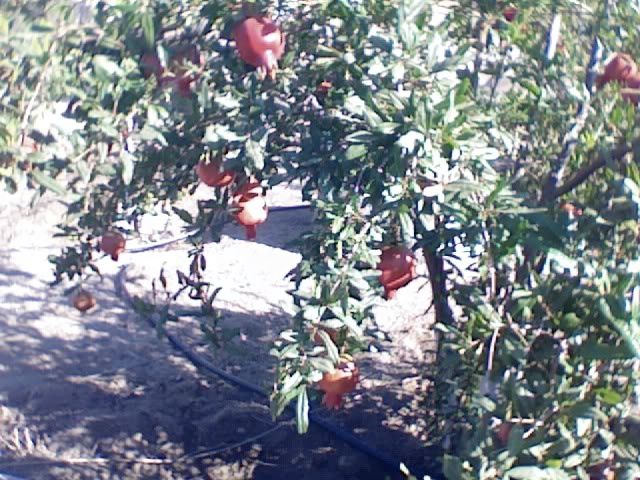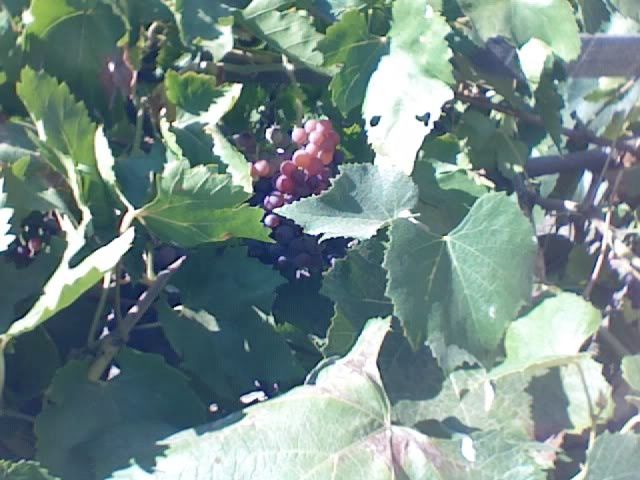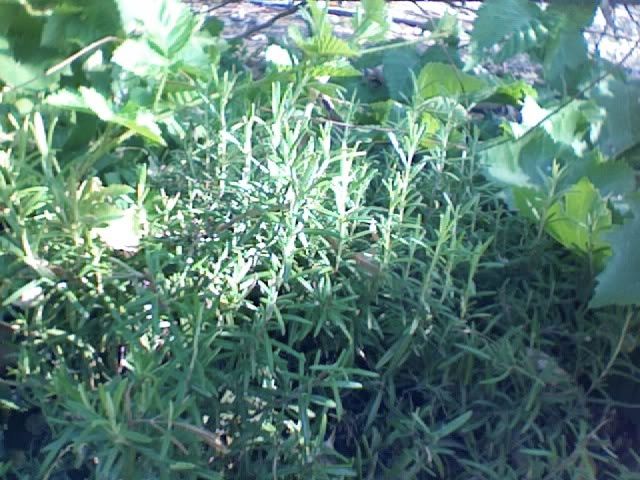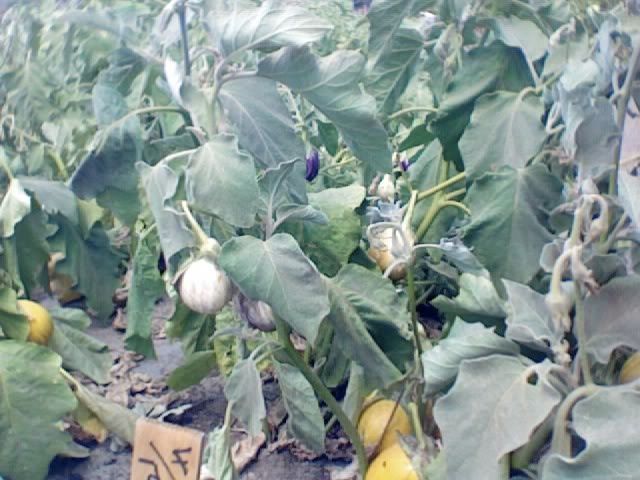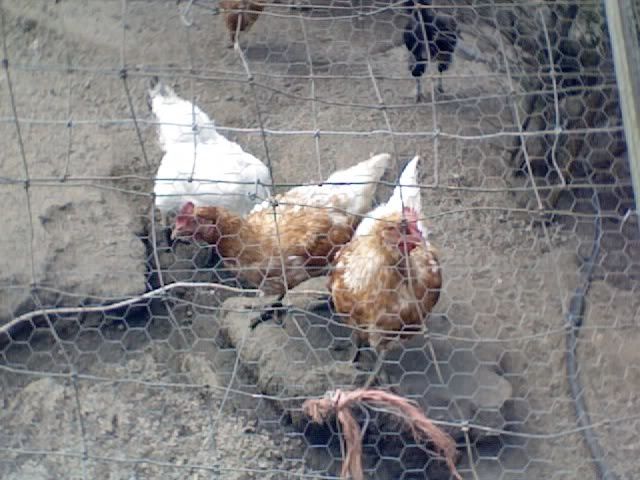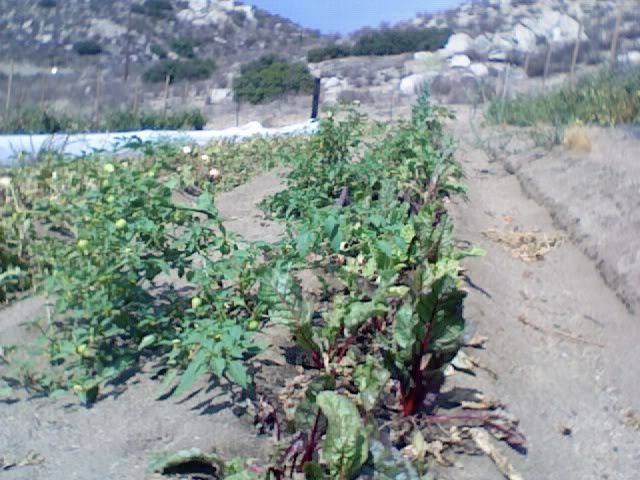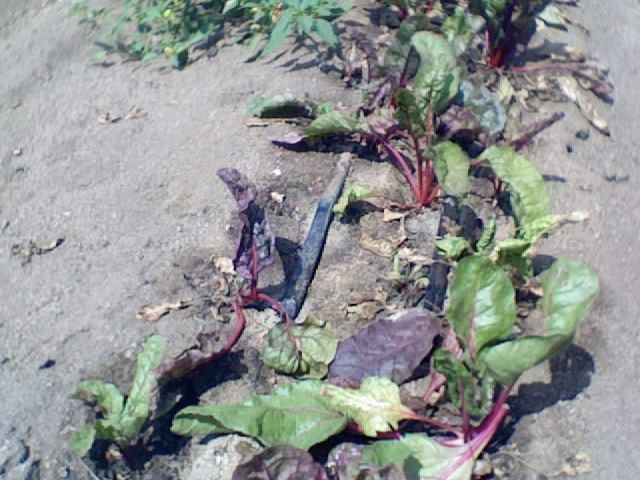(The more I look at this post, the more I like it. I think I want to go learn more about the farms of our state. – promoted by Brian Leubitz)
Last week, I spent a few days working on an organic farm. I should admit right now, I use the word “work” loosely. I was probably more of a pest than a help, even though my intentions were good.
When I first got into blogging about food, I was primarily concerned with the foods we eat and how they affect our health. It was a bit of a revelation to me that our food actually comes from a farm, not a factory, and it grows in dirt, not plastic wrap. Agricultural policy is never something I thought I would care about, but I’ve learned that you can’t separate issues of food consumption from the issues of food production. This is especially true in California, where we produce a large percentage of the food for the entire country (particularly “specialty crops,” i.e. not commodity crops like corn and soy).
Since I’m painfully aware of my ignorance when it comes to farming, I was eager (and a bit nervous) to spend a few days working on a farm. The opportunity presented itself when an organic farmer named Phil at my local market told me he participated in the WWOOF program (Willing to Work on an Organic Farm). He provides room and board in exchange for labor. After exchanging a few emails, the plans were in place.
Phil’s farm plants on Mon, Tues, Wed and harvests the end of the week. He suggested I visit on a Wed, Thur, Fri so I could see both sides of the job, but my schedule limited me to just Thursday and Friday. I assumed I’d be picking tomatoes or something.
Thursday morning, I tried to pry my butt out of bed at 6am so I could make it to Phil’s farm somewhat early. I figured that farms aren’t known for getting a late start and if I was really going to work for 2 full days, I better show up by about 8am.
Well, 6am wasn’t happening. After getting gas, picking up breakfast, and taking care of all sorts of cat stuff (Raiden, my lovely black kitty, ate a piece of jewelry that day), I got on the road. It was nearly 10am. An hour and fifteen minutes later, I pulled into a driveway next to a few horses and parked my car among a bunch of large SUVs, vans, and trucks. (I wanted to get a pic of this – it was pretty hilarious. All these big vehicles and my little Corolla with its liberal bumper stickers.)
When I got out of the car, a rooster crowed. I was really on a farm! I walked up to the front door, which a small Mexican woman answered promptly. I found out later that her name is Nelly and she’s from Acapulco but I found out immediately that she doesn’t speak a word of English.
Here, you don’t need any English. Phil is fully bilingual, as is his wife Juany. Several men (all Mexican) and Nelly take care of the day to day farm work while Phil works a full-time job from his home office in addition to farming.
Nelly invited me inside and Phil’s son Justin came over and introduced himself. As he did so, I was attacked by two dogs: Chalupa, the little chihuahua poodle mix, who was determined to protect his house from me, and Thor, the pit bull, who showered me with kisses.
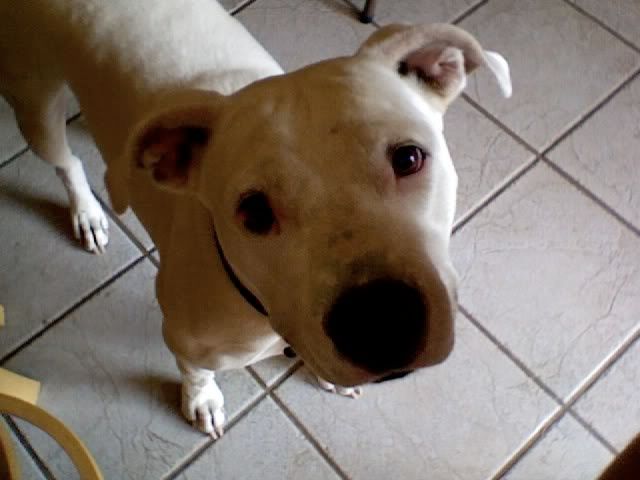
Thor, the extremely affectionate pit bull
Nelly told Chalupa to quiet down, and I recovered enough Spanish to tell her that I spoke “poquito Espanol.” The truth is, I studied Spanish for 4 years in high school. I did so at a very white high school in suburban Chicago and I remember watching a kid puke all over my best friend in Spanish class far better than I actually remember Spanish.
Phil was out fishing, taking advantage of a rare day off work from his two jobs, so I sat with Justin for an hour while waiting for him to return. Justin told me how his dad first bought the property in 2001 for Justin to practice dirt bike racing. The land that now exploded with fertility was entirely barren back then. Once Justin stopped racing, his dad (who already had a garden) just kept planting, turning the land into a successful farm little by little.
Montanas de Tomates
Phil returned and (after taking care of a major crisis that arose in his absence) introduced me to his team – Cesar, Manuel, Max, and Antonio. For my first job, they had me slice tomatoes for drying. Phil’s tomatoes were the reason I began talking to him in the first place. Many stands at my farmers’ market offer tomatoes, but Phil’s are the best – best quality, and best variety.
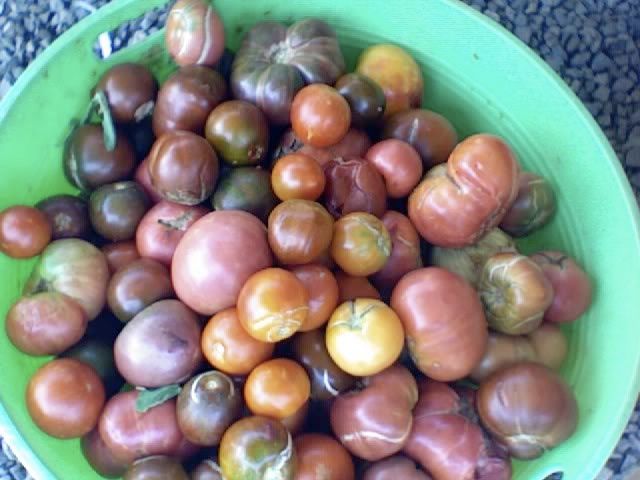
Heirloom tomatoes to be sundried
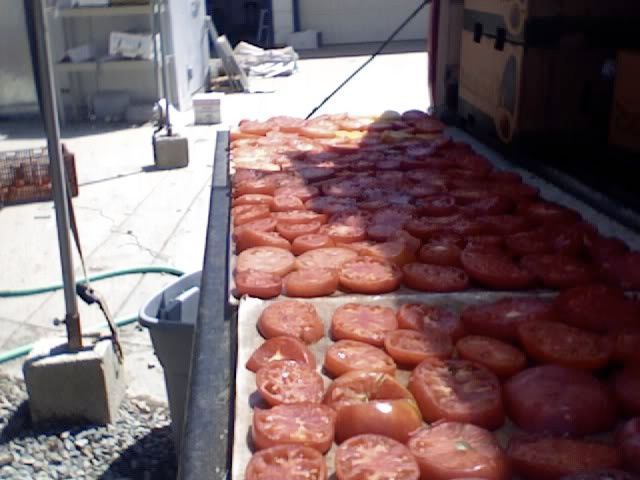
Sheets of tomatoes, ready to dry
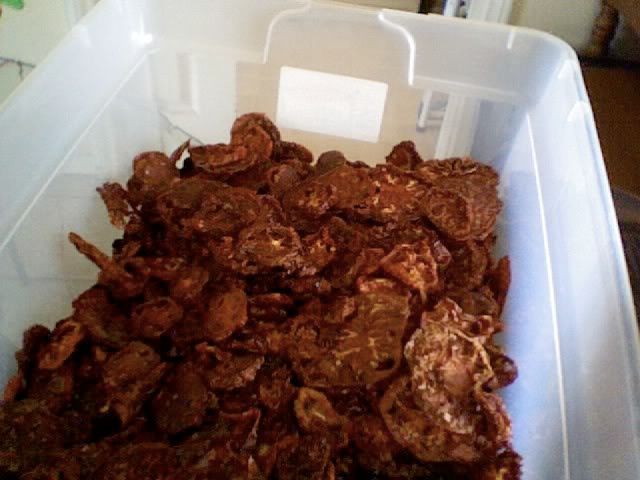
The end result – Sundried tomatoes
After doing that for a few hours (blissfully in the shade, since the temperature was in the 3-digit range), I asked Manuel “Tienes trabajo para mi?” (Do you have work for me?) He instructed me to help him grade the fresh-picked tomatoes. The largest, prettiest ones (the #1s) go to stores like Whole Foods, the ones with a blemish or two (the #2s) go to the market, and the aguado (mushy) ones get sundried. The irony is that the store demands only #1s but pays a lower price than going rate for #2s at the farmers’ market. For a consumer, the market provides a discount, because the stores sell #1s for about $4.99/lb (and by that point, the tomatoes are rather aguado anyway).
La Cena y La Noche
When work was done for the day, I joined the family for dinner. I can’t imagine a nicer reward after working outdoors all day (not that I either worked all day or worked that hard). Nelly had black beans simmering in a crock pot, two kinds of homemade salsas, and guacamole, which she served buffet style alongside tortillas and some kind of meat. Since I didn’t eat meat, she also offered me salad made from fresh picked salad mix, carrots, tomatoes, onions, and cucumbers. I’m not much of a salad person, but those were the best cucumbers I’ve ever eaten!
For dessert, they offered me homemade sweet tamales (I don’t even know what was in them, and I can hardly begin to describe how good they were) and some watermelon. Phil said the coyotes had been getting into the watermelons, leaving very few for human consumption. He wasn’t thrilled with the situation, but when I asked him what he was going to do about it, he said his farm plants enough for all of the animals and all of the people. I’m glad he doesn’t plan on solving his watermelon problem with a gun.
Phil and Juany left to do a walk around the farm, doublechecking everything before getting in bed for the night, and Nelly offered to show me around so I could take some pictures.
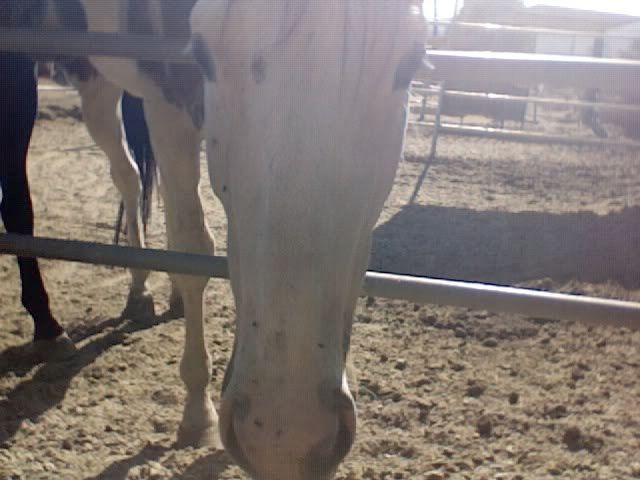
This horse is a camera hog. I’ve got several more pics just like this, and none of the other horse.
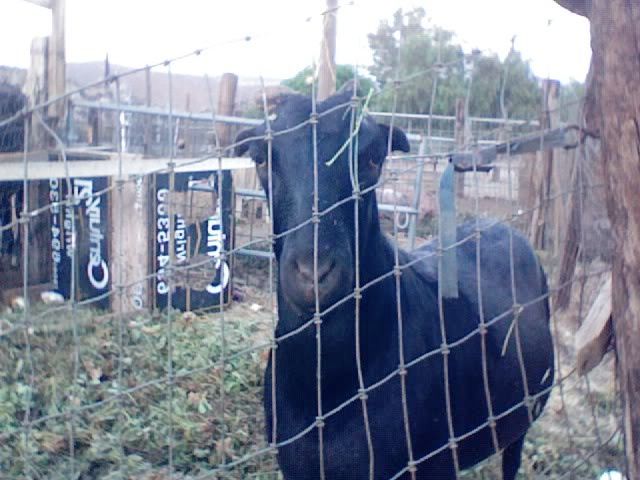
Dewy, their pet goat (children’s book material?)
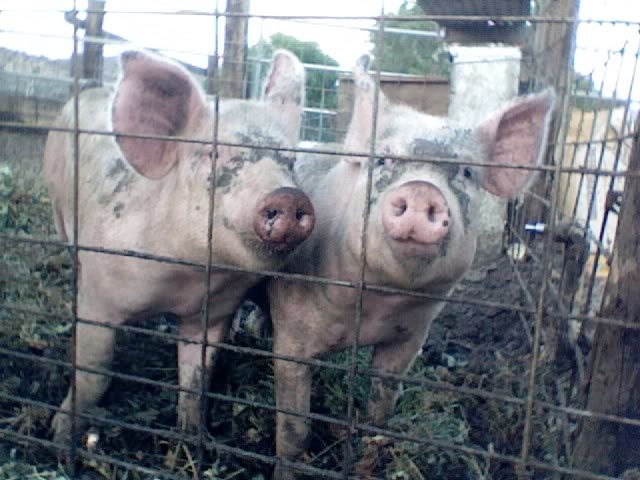
The pigs. Soooo cute, but they smell GREAT.
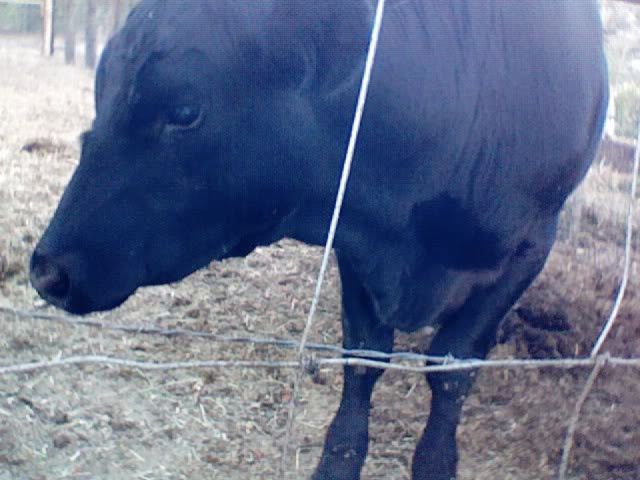
The cow, who REALLY wanted to lick the camera
After I saw all of the animals, Nelly led me around to see some of the plants, including the tomatoes that I’d spent so much time with all day.
We ran into Phil and Juany on our way back to the house and Phil said I’d be sleeping in Nelly’s room. Hmmm, how to say that to Nelly in Spanish? “Puedo dormir contigo?” (“Can I sleep with you?”) That wasn’t going to work. I asked Phil to ask Nelly for me, and he phrased it MUCH better, asking her if I could sleep in her room.
I showered to get all of the doggy kisses and sunblock off me, put my jammies on, and climbed under the blankets set out for me on Nelly’s floor. She was crocheting a shawl and we chatted for a few minutes while she did that, then turned off the lights and went to sleep.
Qui-Quirri-Qui
I woke up at 5:30am the next morning. No one roused me from bed to get to work or anything. It just so happens that roosters make excellent alarm clocks. The roosters on Phil’s farm follow a very clever CYA strategy. They aren’t exactly sure when dawn occurs, so they crow all damn day to make sure that they were definitely crowing at the exact moment the sun came up. (As everyone else spoke Spanish, I can only assume they were saying the Spanish version of Cock-a-doodle-doo, Qui-quirri-qui.)
I wandered into the kitchen to check my email and I was soon joined by Justin. He (bless him) started brewing the coffee and cutting up fruit (all grown on their farm) for a breakfast fruit salad. One by one, everyone else woke up, so I went back to Nelly’s room to get dressed.
Las Cebollas
Outside, Manuel, Cesar, and a few others were packing up boxes for the day’s deliveries. They were good-natured as I got under their feet to take a few pictures:

See how big they are? Almost the size of my head!
Phil noticed that I was looking for work and he asked if I wouldn’t mind weeding the onions. Sure! I agreed. He gave me directions to the onion field, uttering one of my least favorite southern California expressions: “Look out for snakes.”
While wandering off towards the onions (and looking VERY carefully for snakes), I noticed how much was growing in all kinds of unlikely places. Next to some large rocks, there was a pomegranate tree and a tiny little pear tree with one lonely pear hanging from its branches.
I had to pass through the grapevines to reach the onions, and I noticed chives and rosemary growing near my feet, right among the grapes. (By telling me to look for snakes, Phil also guaranteed I wouldn’t step on his herbs because I was SO intently looking at the ground!)
Once I made it past the grapes without any snake incidents, I saw the project that lay ahead. Phil had planted neat rows of onions in beautiful raised beds, feeding them the finest worm poop available, and the field was entirely taken over by thieves and trespassers.

Weeding the onions – my “before” pic
I knelt over the field in a row that didn’t look too challenging and got to work. At first I was pulling a weed with round leaves that didn’t put up much of a fight. As I continued down the row, I reached a grass-like weed that hung on for dear life with roots continuing several feet under the soil, connecting bits of grassy weed along the way.
With one row done, I began to wonder what I was damaging more: the weeds or my hands? I finished up one more row and decided that the real professionals were going to have to do the rest.
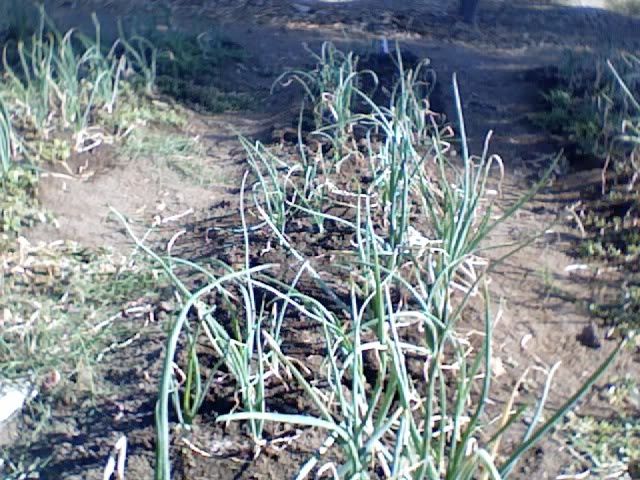
Weeding the onions – my “after” pic
I found Manuel and asked him for more “trabajo.” He started leading me back to the onions and I protested “No mas cebollas! Me duele las manos!” Los manos? Las manos? Whatever, he got the point. My hands hurt and I wanted nothing more to do with onions. He told me I’d be doing something different.
Manuel set me up in the shade among several crates of harvested onions (including one he nicely turned upside down for me to sit on). He showed me how to snip off the stem, remove the hairy roots at the bottom, and remove the dirt-encrusted papery outer layers of onion. I sat there doing that until my stomach told me it was time for lunch. I was beginning to see how work could never be done on a farm. I still sat among the same number of crates and I only had a few clean onions to show for my work.
Almuerzo
I wandered back to the house and munched on the intoxicatingly delicious sundried heirloom tomatoes Nelly was removing from the dehydrator while waiting for some guidance on what I could have for lunch. To make things easy, I asked for leftover “frijoles” from the night before (and one of those amazing tamales!).
Juany and Phil joined me, and Phil and I chatted a bit about the farm. Phil enjoyed gardening as a kid, and as an adult his hobby spilled over into a farm and just kept going. It’s easy to see that he loves his “day job” too, and he plans to keep doing both – so long as he can find a way to get a day off every so often.
He told me he gets pretty attached to his animals, but takes comfort in knowing he’s providing them a better life than they would have in a feedlot. The pigs and the cow don’t have names – they are food. I haven’t had a chance to personally visit a feedlot, but if even a fraction what I’ve read is true, Phil and his family are some of the most ethical omnivores in existence.
Both the pigs and the cow live in fairly large pens and they eat better than many Americans (sad, but true). The cow doesn’t wander in pasture to graze, although I haven’t seen any graze-worthy pasture since I moved here (to quote Austin Powers, “I was just thinking how the English countryside looks nothing like Southern California”). The flies around the cow remind me of Joel Salatin‘s method of allowing his chickens to feast on fat, juicy fly larvae in his cows’ manure. I suppose that’s not possible if you aren’t in the rotational grazing business. Other than his sadness at not being permitted to lick my camera, the cow looked pretty content to me (and I think the pigs were actually smiling).
I also got a sense of Phil’s pride in his amazing vegetables as we chatted. He encouraged me to try some buttercup squash that Nelly had cooked the night before. As I told him, I’m a convert. He gave me one to take home. (Later, when I sliced it open to bake it, I noticed it gave off a fragrant melon-like smell.) Then he stumped me with a pop quiz. Guess what this is? (Pic below)

Guess what this is? (If you can’t see ’em, there are thin, green, vertical stripes on it)
My first try: A tomato. My second try: A pepper. The correct answer? An eggplant. NO JOKE. I brought one home to try it and it tastes slightly different from your run of the mill purple globe eggplant, but it’s definitely eggplanty! If you still harbor any doubts, I saw them growing on the vine, right next to the purple kind I’m used to seeing.
I had a few minutes left to wait before Cesar, etc, came back from lunch, so I strolled around and tried to think of ways to make myself useful. Over by the chickens, I noticed six eggs laying in a box lined with hay. I don’t know if I was being a pain in the butt or helping out by gathering ’em up, but I carefully let myself into the penned chicken area and collected the eggs – two white, two brown, and two green.
Ensalada Para La Vaca
Cesar and Manuel returned, carrying a box of tomatillos, putting the finishing touches on an order Justin was going to deliver soon. They weighed it and Manuel went off to get more tomatillos since it was underweight a bit. He had me follow him, and set me up cutting the leaves off a loooong row of Swiss chard plants while leaving the plants intact. A pest had gotten into the Swiss chard and they were good for no one but the cow now, but he assured me the leaves would regenerate after I cut them.
I started thinking about veganism as I worked on the Swiss chard. I don’t think I can really justify it any more. In this case, the Swiss chard would have been wasted, but the cow will turn it into beef instead. Even if you have ethical concerns about eating an animal, you could feed the chard to a dairy cow or a goat. (Another thought here: all living things die eventually, and animals slaughtered humanely – if you can get over the oxymoron – meet their ends in a way that’s not altogether that bad, given that it’s ultimately inevitable anyway.) One can argue that without the cow, the chard could be composted, but the cow will also produce fertilizer (in addition to beef).
Of course, I don’t think I will go treat myself to a meat pig-out after this revelation, because most animal products are not produced in such a sustainable manner. Consider the ratio of manure to farmland on Phil’s farm. He can use it as fertilizer (instead of commercial fertilizer), and he’ll never set up a factory farm-style manure lagoon to pollute the environment with. For that matter, Phil’s system requires very little oil, since he uses fruit and veggie waste to feed his animals, and they in turn produce both food and fertilizer.
After gathering up a gourmet (if pest-infested) salad for the cow, I carried it over to the walk-in fridge and said my good-byes to get on the road. As much as I enjoyed working outdoors in 100 degree heat, I felt a headache coming on and I didn’t want to get caught with a bad headache while I still had a long drive ahead of me.
After only experiencing Phil’s style of ethical food production for a few days, I could already see first-hand the many ways it was superior to the industrialized system we’ve adopted instead. Phil provides full-time jobs to several people and while I didn’t inquire about the details of the arrangement, it’s easy to see the mutual respect they all have for one another. He treats his workers, his animals, the environment, and his customers well; it’s not a zero sum game, where one wins when the other loses.
Once all was said and done, I returned home VERY sore. After spending Saturday in bed, I got up Sunday to go to the farmers’ market and get a massage. The massage therapist laughed when I told him I messed up my neck by weeding a field of onions. He asked if I learned much about gardening during my time on the farm. I replied, “I learned how much damn work goes into my food!”

